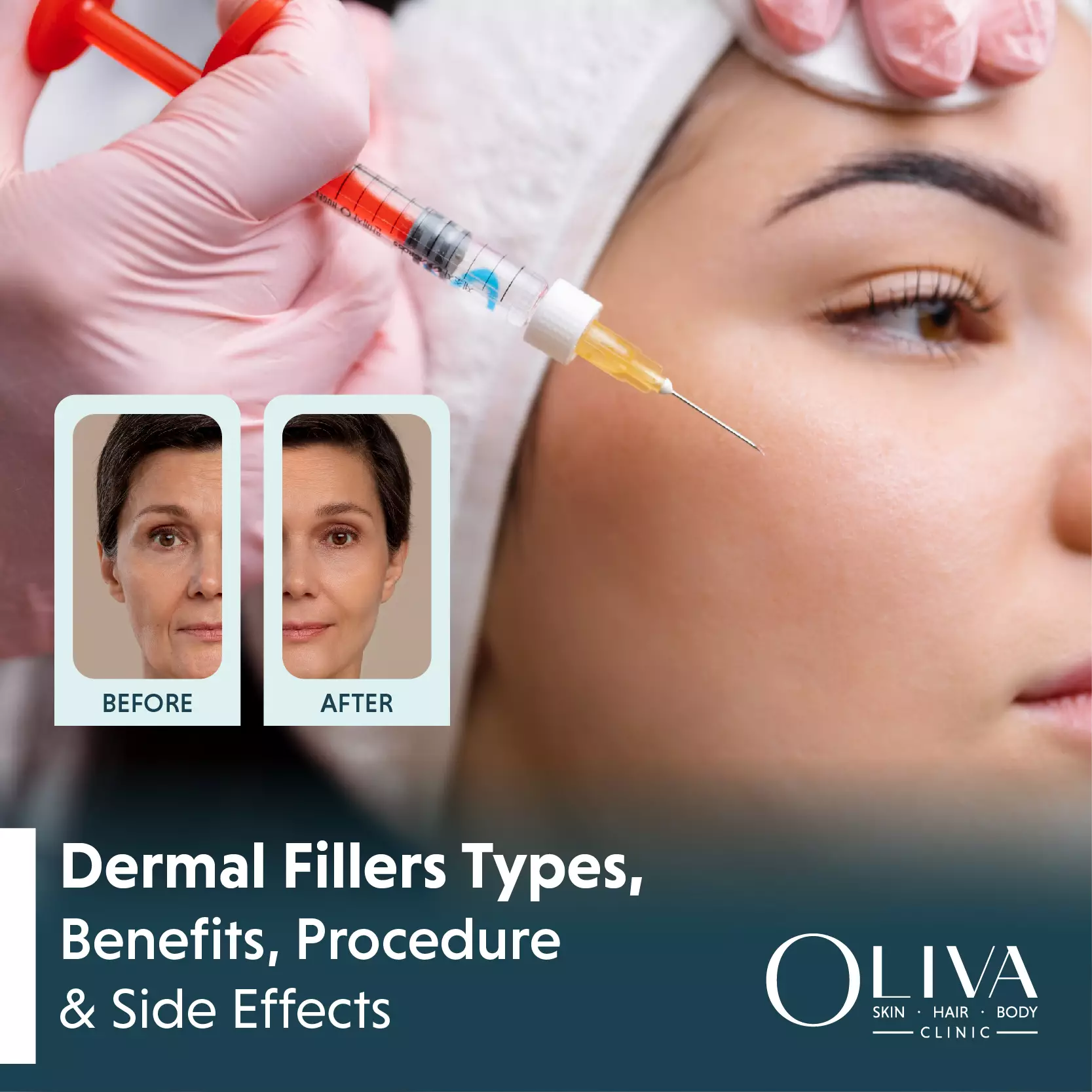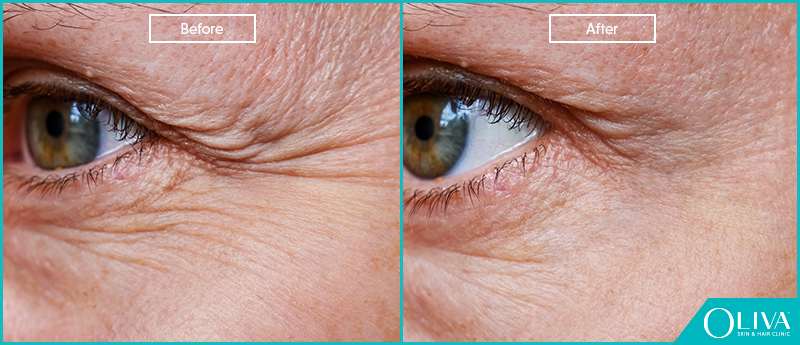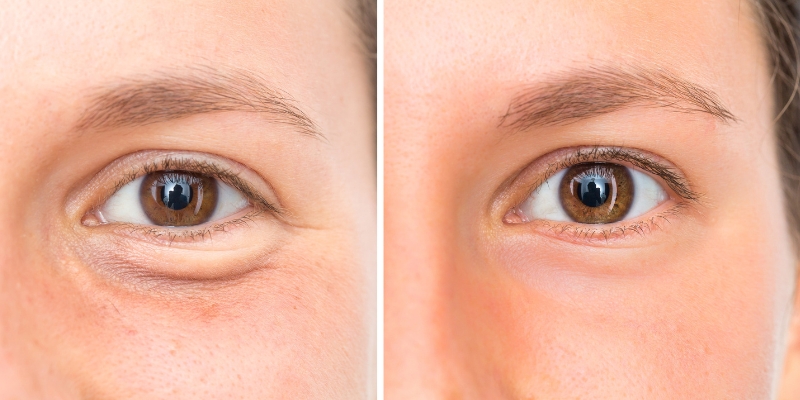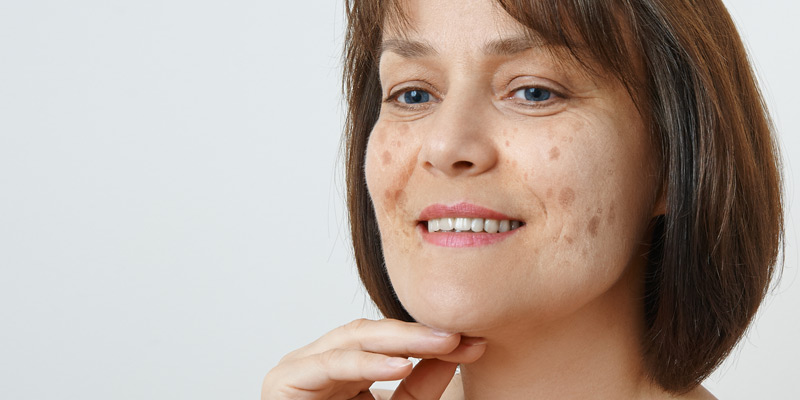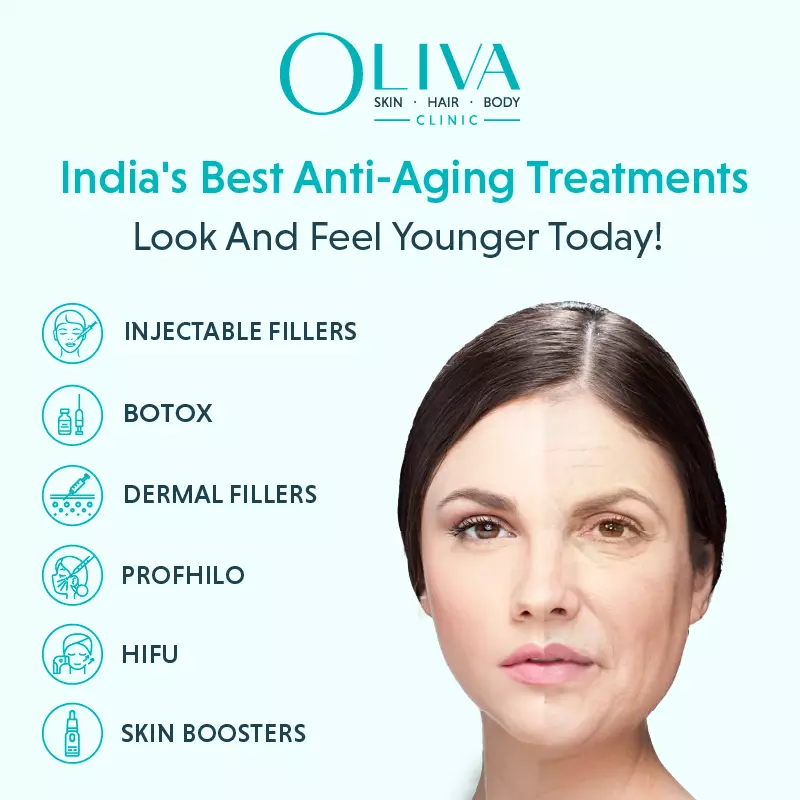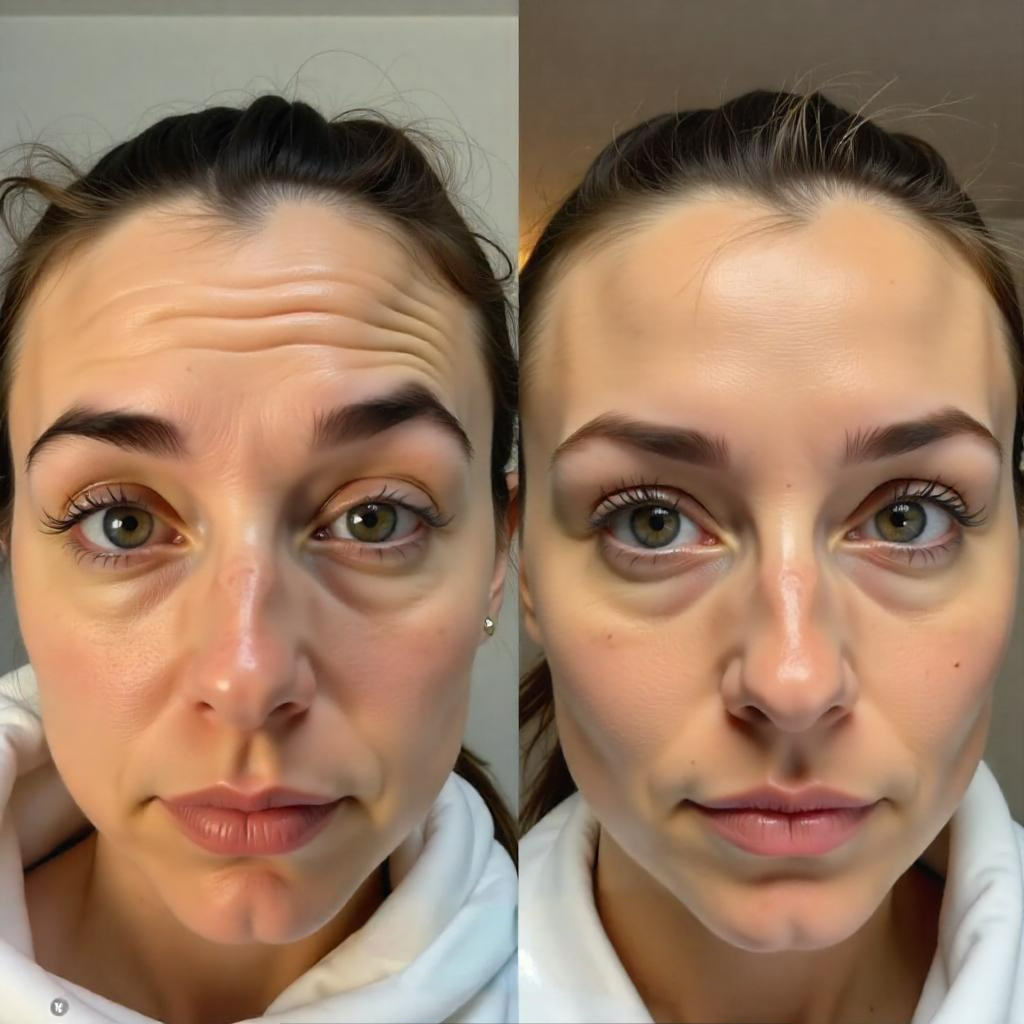Dermal Fillers: Types, Benefits, Procedure, Cost & Side Effects
Dermal fillers are becoming an increasingly popular option in aesthetic treatments today. They are a minimally invasive solution to enhance facial features, fight the signs of ageing, and achieve a youthful appearance.
What Are Dermal Fillers?
Dermal fillers are soft tissue injectables made of polysaccharides. They add volume to different parts of the face, smooth out wrinkles, and enhance facial features. Their versatility enables dermatologists to inject them into various skin depths to achieve the desired cosmetic results.
How Do Dermal Fillers Work?
Dermal fillers work by injecting gel-like substances into the skin. The substance is often hyaluronic acid, used to enhance facial contours, smoothen wrinkles, and restore volume to sagging skin. This process also stimulates collagen production and helps give a rejuvenated and youthful look.
What Are The Types Of Dermal Fillers?
Dermal fillers are of different types, each designed to address specific aesthetic concerns. Different fillers deliver different benefits. Here is an overview of some of the most common types of dermal fillers:
Calcium Hydroxylapatite:
Calcium Hydroxylapatite is a mineral-like compound found naturally in human bones. It treats moderate-to-severe facial wrinkles and folds and also serves as one of the commonly used cheek dermal fillers to enhance cheek volume. This dermal filler also evens out nasolabial folds.
Calcium Hydroxylapatite Benefits:
- It gives natural-looking results.
- These fillers help stimulate collagen production in the skin, making them the preferred dermal fillers under eyes.
- The results are long-lasting, usually up to a year or more.
Hyaluronic Acid:
Hyaluronic acid is present naturally in our skin and helps to retain moisture. When used as a filler, it adds volume to lips and cheeks. Hyaluronic acid fillers are effective dermal fillers for sunken eyes that help smooth fine lines, wrinkles, and nasolabial folds.
Hyaluronic Acid Benefits:
- Fillers with Hyaluronic acid improve skin hydration and offer immediate results.
- They are easily reversible, mainly the dermal filler for under eye hollows.
- The results usually last for six months to a year.
Polyalkylimide:
Polyalkylimides are semi-permanent dermal fillers that are also biocompatible. This means they are compatible with human tissue. Primarily used to treat deeper wrinkles and facial wasting due to illness, they are also effective cheek dermal fillers to enhance the cheekbones.
Polyalkylimide Benefits:
- This filler is compatible with human tissue and, thus, reduces the risk of allergic reactions and adverse effects.
- It does not require any testing for allergic reaction to dermal fillers before the Polyalkylimide dermal filler treatment.
- The results are long-lasting and reversible if required.
Polylactic Acid:
Polylactic acid is a synthetic filler that effectively stimulates the production of collagen. This makes it one of the most preferred dermal fillers for smile lines and deeper facial wrinkles like nasolabial folds. Polylactic acid fillers also add volume to sunken cheeks.
Polylactic Acid Benefits:
- These fillers boost collagen production in the skin and are preferable for
- Its results are gradual and take a few months.
- These dermal filler injections offer long-lasting results for up to two years.
Polymethyl-Methacrylate Microspheres (PMMA):
PMMAs are semi-permanent dermal fillers made from collagen gel containing tiny, suspended microspheres. They are highly biocompatible and help treat deep wrinkles. PMMA fillers are ideal dermal fillers for nose and surrounding folds and the most preferred dermal fillers for acne scars and lip augmentation.
PMMA Benefits:
- This dermal filler provides long-lasting results, often considered semi-permanent.
- It stimulates the body to produce collagen over time.
What Are The Benefits Of Dermal Fillers?
Here are some of the top benefits of dermal fillers:
-
Instant Results:
Dermal filler treatment instantly adds volume and reduces wrinkles, enhancing facial appearance.
-
Volume Restoration:
Dermal fillers restore fullness to cheeks, lips, and other areas of the face affected by volume loss due to ageing. They give a youthful appearance.
-
Enhanced Facial Contours:
Dermal fillers not only define but also enhance cheekbones. They help contour the jawline and other facial features for a more sculpted appearance.
-
Improved Skin Texture:
Dermal fillers help smoothen fine lines and wrinkles to improve skin texture and radiance.
-
Long-Lasting Effects:
Results from dermal fillers can last several months to over a year. They vary depending on the type of filler used and the treatment area.
-
Non-Surgical Solution:
These are a minimally invasive alternative to surgery. You can see noticeable improvements without incisions or prolonged recovery time.
-
Natural-Looking Results:
Dermal fillers subtly enhance facial features while maintaining a natural appearance. Such results, however, are possible only when performed by experienced professionals.
-
Treats Various Concerns:
This treatment is a versatile solution for several concerns, including wrinkles, folds, volume loss, and facial asymmetry. You can even consult your dermatologist for customised treatment options for a chin dermal filler or dermal fillers for dark circles.
-
Stimulates Collagen Production:
Some dermal fillers stimulate collagen synthesis, enhancing overall skin elasticity and firmness over time.
-
Customisable Treatment:
Dermal fillers offer a tailored approach to individuals based on their unique needs and aesthetic goals. It is best to consult a dermatologist for solutions that offer personalised enhancements and satisfaction.
-
Minimal Downtime:
This treatment requires little to no downtime, allowing patients to resume daily activities shortly after treatment.
Dermal Fillers Procedure
To understand how to prepare for dermal fillers, you need to know the dermal filler procedure, which consists of three stages [1] as explained below:
Pre-treatment:
Before the procedure begins, your dermatologist carefully assesses your face and skin. They identify the areas you want to enhance or correct with dermal fillers. Sometimes, they may even mark the injection sites on your face or take photographs for reference. They then cleanse the injection sites thoroughly with an antibacterial solution to ensure they are sterile and ready for treatment.
During Treatment:
Once the cleansing is complete, the dermatologist numbs the injection sites with the help of a cold instrument to chill the skin or by applying an anaesthetic cream to reduce any discomfort. Sometimes, they may also administer local anaesthesia if the procedure is lengthy. The injections are quick and usually well-tolerated. The doctor now injects the filler and massages the area. This helps in the even distribution of the filler and achieves the desired result. Upon assessment, the specialist may add more fillers as needed. The whole procedure usually lasts 15 minutes to an hour.
Post-treatment:
After the injections are complete and the clients achieve their desired results, the dermatologist removes the marking and gently cleans your face. They may apply an ice pack to the treated areas to reduce swelling and any minor discomfort. It is normal to experience tenderness in the treated areas for a day or two. These side effects go away on their own without any medication. Following all post-care instructions and monitoring your results is essential to manage the concerns promptly.
Before & After Results
Here are some dermal fillers before and after pictures where you can see the noticeable results of the treatment:
Precautions and Tips to Maintain Results From Dermal Fillers
Here are some important tips and precautions you must remember as vital aftercare for dermal fillers to ensure the best results from the treatment:
-
Avoid Touching the Treated Area:
You must avoid touching or massaging the treated areas to prevent filler displacement. Frequent touching can also increase the risk of infection.
-
Apply Cold Compresses:
Use cold compresses to minimise swelling and bruising, especially within the first 24 hours after treatment.
-
Avoid Intense Physical Activity:
It is best to avoid strenuous exercise after dermal fillers treatment for at least 24 to 48 hours. This helps reduce the risk of swelling, bruising, or shifting the filler.
-
Stay Hydrated:
Drink plenty of water to keep your skin hydrated. This will help to maintain the plumpness and elasticity provided by the fillers.
-
Sleep with Your Head Elevated:
Keep your head raised while sleeping after a dermal filler treatment to reduce swelling and prevent pressure on the treated areas. [2]
-
Avoid Alcohol:
Do not consume alcohol for at least 24 hours post-treatment, as it may increase the risk of swelling. [3]
-
Use Gentle Skincare Products:
After the treatment, use mild, non-irritating skincare products to avoid inflammation in the treated areas.
-
Do Not Apply Makeup:
Avoid applying makeup for at least 24 hours to prevent infection and irritation at the injection sites.
-
Do Not Schedule Other Facial Treatments:
Do not undergo any other facial treatments or massages immediately after dermal fillers. Allow the fillers to settle and wait for at least two weeks for proper healing.
-
Monitor Allergic Reactions:
Watch out for signs of allergic reactions, such as excessive swelling, redness, or itching, and contact your dermatologist immediately if you notice any.
How Much Do Dermal Fillers Cost In India?
The dermal fillers cost in India usually varies from Rs. 15,000 to Rs. 30,000 per syringe. Various factors affect the dermal fillers cost, including the type of filler and quantity of filler used. For example, permanent dermal fillers cost more than temporary or semi-permanent types. Also, while the cost of 1 ml dermal filler ranges from Rs. 18,000 to Rs. 27,000, it may even increase depending on several factors.
DISCLAIMER:
Please note that the prices mentioned are indicative and may vary depending on the specific treatment, choice of technology, and underlying skin or hair conditions. Prices are also subject to change based on ongoing promotions or offers at the clinic. For an accurate estimate, please consult with our dermatologist.
What else could possibly affect the 1 ml dermal filler price? Well, if an experienced dermatologist performs your treatment in a state-of-the-art clinic with the best technology available, your dermal fillers price is likely to be higher. The 1 ml dermal filler cost may also vary from city to city.
What Are The Risks Or Complications Of Dermal Fillers?
Here are some side effects and complications that may arise after a dermal filler treatment [4]:
Common Side Effects:
These side effects are common and may subside on their own within a few hours after the procedure:
- Redness and Swelling: After the procedure, you may notice temporary redness and swelling around the injection sites. However, it subsides within a few hours.
- Bruising: It is common to experience minor bruising at the injection sites due to slight blood vessel trauma. This usually resolves in a few days.
- Pain and Discomfort: Some soreness or discomfort at the injection sites is normal immediately after treatment. However, it goes away very soon.
- Itching and Rash: Occasionally, mild itching or a rash may develop, which resolves on its own without needing specific treatment.
Rare & Severe Side Effects:
These side effects surface when the dermatologist does not perform the procedure well. They are a result of lack of skill or negligence:
- Lumps and Bumps: The filler’s uneven distribution may result in visible lumps or bumps, which may require correction by a skilled professional.
- Asymmetry: The uneven distribution of the filler can cause asymmetrical facial features. In such cases, the doctor may have to adjust the features or remove the filler.
- Infection: Although infection is rare, it may happen if the surface is not sterile during injection.
- Allergic Reactions: In some cases, allergic reactions such as swelling, redness, or itching may occur and require medical attention.
- Vascular Complications: Injection into blood vessels can limit blood flow, requiring prompt medical intervention to prevent tissue damage.
- Blindness: This situation, though extremely rare, is severe. Filler injected into a blood vessel near the eye can lead to vision loss and may require immediate medical attention.
- Scarring and Skin Damage: Improper injection technique can also cause permanent changes to the skin texture and lead to scarring, highlighting the importance of skilled administration.
NOTE:
If you are considering dermal fillers, it is very important to choose an experienced and skilled dermatologist. This is the safest way to avoid side effects and get the best results from the treatment.
Frequently Asked Questions On Dermal Fillers
Q1. How Long Do Dermal Fillers Last?
A1. The duration of results from dermal fillers varies by the type of filler used and individual factors. They, however, usually last for six months to two years.
Q2. Who Is The Right Candidate To Take Dermal Fillers?
A2. The ideal candidates for dermal fillers are people over 22 years of age [5] who are in good health and seeking to reduce wrinkles, treat acne scars, enhance facial contours, or restore volume to their skin.
Q3. Who Should Avoid Taking Dermal Fillers?
A3. People with contraindications to dermal fillers should avoid them. These include pregnant or breastfeeding women, individuals with active skin infections, or those prone to allergies and keloid scarring.
Q4. Are Dermal Fillers Better Than Botox?
A4. The difference between Botox and dermal fillers is that fillers add volume and reduce wrinkles, while Botox targets muscle movement. Combining both helps address multiple areas of the face simultaneously and prolongs the results. However, dermal fillers are more versatile as you can inject them into lips as well, while Botox cannot.
Q5. How Long Do Dermal Fillers Really Last?
A5. The results of dermal fillers usually last from six months to two years, depending on the type of filler used and individual factors.
Q6. Do Dermal Fillers Treat Jowls?
A6. Yes, you can effectively lift jowls using dermal fillers.
Q7. Do Dermal Fillers Treat Stretch Marks?
A7. Some dermal fillers help reduce the appearance of stretch marks by adding volume and improving skin texture.
Q8. What are Superficial Dermal Fillers?
A8. Superficial dermal fillers are injectables administered into the top layers of the skin to improve fine lines, wrinkles, and skin texture.
Q9. What Is Dermal Filler Cannula?
A9. A cannula is a blunt-tipped tool used instead of a needle to inject fillers. It reduces bruising and discomfort.
Q10. What is the Tyndall Effect in Dermal Fillers?
A10. The Tyndall effect is a bluish discolouration seen under the skin when you inject dermal fillers too superficially. Experienced dermatologists use proper techniques to reduce this risk.
Q11. What Are The Allergic Reactions To Dermal Fillers?
A11. Allergic reactions to fillers are rare but may include swelling, redness, or itching at the injection site. Severe reactions are extremely uncommon.
Takeaway
Dermal fillers offer a versatile and effective solution to enhance facial features, smooth wrinkles, and restore lost volume. By understanding the types of fillers available, the procedure, potential side effects, and aftercare tips, you can make an informed decision and achieve the best results.
So, are you ready to rejuvenate your appearance and boost your confidence? Schedule a consultation with a qualified specialist today! The experts at Oliva will be happy to offer consultation and help you explore your options.


